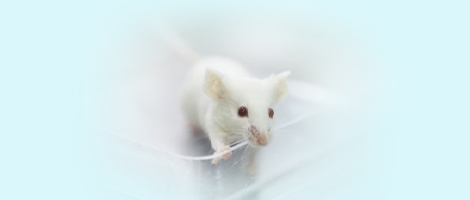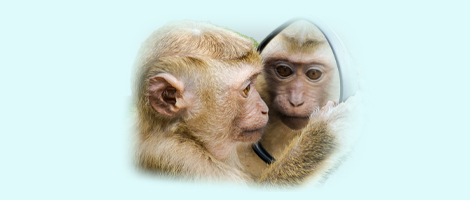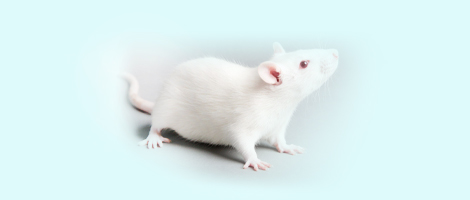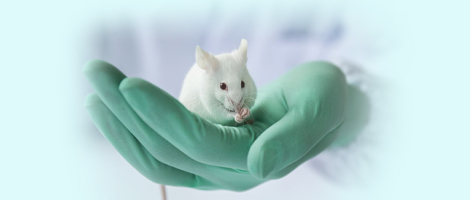| 1 |
AKHTAR A. The flaws and human harms of animal experimentation[J]. Cambridge quarterly of healthcare ethics: CQ: the international journal of healthcare ethics committees, 2015, 24(4): 407-419. DOI: 10.1017/S0963180115000079 .
|
| 2 |
BALCOMBE JP. Laboratory environments and rodents' behavioural needs: A review[J]. Laboratory Animals, 2006, 40(3): 217-235. DOI: 10.1258/002367706777611488 .
|
| 3 |
TEBON PJ, WANG B, MARKOWITZ AL, et al. Drug screening at single-organoid resolution via bioprinting and interferometry[J]. Nature Communications, 2023, 14(1): 3168. DOI: 10.1038/s41467-023-38832-8 .
|
| 4 |
LEVATO R, DUDARYEVA O, GARCIAMENDEZ-MIJARES CE, et al. Light-based vat-polymerization bioprinting[J]. Nature Reviews Methods Primers, 2023, 3(1): 1-19. DOI: 10.1038/s43586-023-00231-0 .
|
| 5 |
Kang HW, Lee SJ, Ko IK, et al. A 3D bioprinting system to produce human-scale tissue constructs with structural integrity[J]. Nat Biotechnol. 2016;34(3):312-319. DOI: 10.1038/nbt.3413
|
| 6 |
JI S and GUVENDIREN M. Recent advances in bioink design for 3D bioprinting of tissues and organs[J]. Frontiers in Bioengineering and Biotechnology, 2017, 5. DOI: 10.3389/fbioe.2017.00023 .
|
| 7 |
WANG T, HAN Y, WU Z, et al. Tissue-specific hydrogels for three-dimensional printing and potential application in peripheral nerve regeneration[J]. Tissue Engineering. Part A, 2022, 28(3-4): 161-174. DOI: 10.1089/ten.TEA.2021.0093 .
|
| 8 |
XIANG Y, MILLER K, GUAN J, et al. 3D bioprinting of complex tissues in vitro: State-of-the-art and future perspectives[J]. Archives of Toxicology, 2022, 96(3): 691-710. DOI: 10.1007/s00204-021-03212-y .
|
| 9 |
TANG M, RICH JN, CHEN S. Biomaterials and 3D bioprinting strategies to model glioblastoma and the blood-brain barrier [J]. Adv Mater, 2021, 33(5): e2004776. DOI: 10.1002/adma.202004776
|
| 10 |
ZHOU L, FU J and HE Y. A review of 3D printing technologies for soft polymer materials[J]. Advanced Functional Materials, 2020, 30(28): 2000187. DOI: 10.1002/adfm.202000187 .
|
| 11 |
RESEARCH C FOR DE AND. Novel drug approvals for 2024[J]. FDA, 2024. .
|
| 12 |
VAN NORMAN GA. Limitations of animal studies for predicting toxicity in clinical trials: Is it time to rethink our current approach?[J]. JACC. Basic to translational science, 2019, 4(7): 845-854. DOI: 10.1016/j.jacbts.2019.10.008 .
|
| 13 |
SCHUSTER B, JUNKIN M, KASHAF SS, et al. Automated microfluidic platform for dynamic and combinatorial drug screening of tumor organoids[J]. Nature Communications, 2020, 11(1): 5271. DOI: 10.1038/s41467-020-19058-4 .
|
| 14 |
TUNG YT, CHEN YC, DERR K, et al. A 3D bioprinted human neurovascular unit model of glioblastoma tumor growth[J]. Advanced Healthcare Materials, 2024, 13(15): e2302831. DOI: 10.1002/adhm.202302831 .
|
| 15 |
DESIGAUX T, COMPERAT L, DUSSERRE N, et al. 3D bioprinted breast cancer model reveals stroma-mediated modulation of extracellular matrix and radiosensitivity[J]. Bioactive Materials, 2024, 42: 316-327. DOI: 10.1016/j.bioactmat.2024.08.037 .
|
| 16 |
TANG M, XIE Q, GIMPLE RC, et al. Three-dimensional bioprinted glioblastoma microenvironments model cellular dependencies and immune interactions[J]. Cell Research, 2020, 30(10): 833-853. DOI: 10.1038/s41422-020-0338-1 .
|
| 17 |
TANG M, QU Y, HE P, et al. Heat-inducible CAR-T overcomes adverse mechanical tumor microenvironment in a 3D bioprinted glioblastoma model[J]. Materials Today. Bio, 2024, 26: 101077. DOI: 10.1016/j.mtbio.2024.101077 .
|
| 18 |
TANG M, TIWARI SK, AGRAWAL K, et al. Rapid 3D Bioprinting of Glioblastoma Model Mimicking Native Biophysical Heterogeneity[J]. Small (Weinheim an Der Bergstrasse, Germany), 2021, 17(15): e2006050. DOI: 10.1002/smll.202006050 .
|
| 19 |
JOHNSON BN, LANCASTER KZ, HOGUE IB, et al. 3D printed nervous system on a chip[J]. Lab on a Chip, 2016, 16(8): 1393-1400. DOI: 10.1039/c5lc01270h .
|
| 20 |
BANERJEE D, IVANOVA MM, CELIK N, et al. Biofabrication of anin-vitrobone model for gaucher disease[J]. Biofabrication, 2023, 15(4): 045023. DOI: 10.1088/1758-5090/acf95a .
|
| 21 |
SCARIAN E, BORDONI M, FANTINI V, et al. Patients' stem cells differentiation in a 3D environment as a promising experimental tool for the study of amyotrophic lateral sclerosis[J]. International journal of molecular sciences, 2022, 23(10): 5344. DOI: 10.3390/ijms23105344 .
|
| 22 |
ROUSSEL R, STEG PG, MOHAMMEDI K, et al. Prevention of cardiovascular disease through reduction of glycaemic exposure in type 2 diabetes: A perspective on glucose-lowering interventions[J]. Diabetes, Obesity & Metabolism, 2018, 20(2): 238-244. DOI: 10.1111/dom.13033 .
|
| 23 |
ALI ASM, WU D, BANNACH-BROWN A, et al. 3D bioprinting of liver models: A systematic scoping review of methods, bioinks, and reporting quality[J]. Materials Today. Bio, 2024, 26: 100991. DOI: 10.1016/j.mtbio.2024.100991 .
|
| 24 |
NGUYEN DG, FUNK J, ROBBINS JB, et al. Bioprinted 3D primary liver tissues allow assessment of organ-level response to clinical drug induced toxicity In vitro[J]. PLOS One, 2016, 11(7): e0158674. DOI: 10.1371/journal.pone.0158674 .
|
| 25 |
JANANI G, PRIYA S, DEY S, et al. Mimicking native liver lobule microarchitecture In vitro with parenchymal and non-parenchymal cells using 3D bioprinting for drug toxicity and drug screening applications[J]. ACS Applied Materials & Interfaces, 2022, 14(8): 10167-10186. DOI: 10.1021/acsami.2c00312 .
|
| 26 |
HE J, WANG J, PANG Y, et al. Bioprinting of a hepatic tissue model using human-induced pluripotent stem cell-derived hepatocytes for drug-induced hepatotoxicity evaluation [J]. Int J Bioprint, 2022, 8(3): 581. Published 2022 Jun 14. DOI: 10.18063/ijb.v8i3.581
|
| 27 |
DEY S, BHAT A, JANANI G, et al. Microfluidic human physiomimetic liver model as a screening platform for drug induced liver injury[J]. Biomaterials, 2024, 310: 122627. DOI: 10.1016/j.biomaterials.2024.122627 .
|
| 28 |
FERRI N, SIEGL P, CORSINI A, et al. Drug attrition during pre-clinical and clinical development: understanding and managing drug-induced cardiotoxicity[J]. Pharmacology & Therapeutics, 2013, 138(3): 470-484. DOI: 10.1016/j.pharmthera.2013.03.005 .
|
| 29 |
YANG K, WANG L, VIJAYAVENKATARAMAN S, et al. Recent applications of three-dimensional bioprinting in drug discovery and development[J]. Advanced Drug Delivery Reviews, 2024, 214: 115456. DOI: 10.1016/j.addr.2024.115456 .
|
| 30 |
ARAI K, MURATA D, TAKAO S, et al. Drug response analysis for scaffold-free cardiac constructs fabricated using bio-3D printer[J]. Scientific Reports, 2020, 10(1): 8972. DOI: 10.1038/s41598-020-65681-y .
|
| 31 |
IWANAGA S, HAMADA Y, TSUKAMOTO Y, et al. Design and fabrication of mature engineered pre-cardiac tissue utilizing 3D bioprinting technology and enzymatically crosslinking hydrogel[J]. Materials (Basel, Switzerland), 2022, 15(22): 7928. DOI: 10.3390/ma15227928 .
|
| 32 |
LIU S, WANG Z, CHEN X, et al. Multiscale anisotropic scaffold integrating 3D printing and electrospinning techniques as a heart-on-a-chip platform for evaluating drug-induced cardiotoxicity[J]. Advanced Healthcare Materials, 2023, 12(24): e2300719. DOI: 10.1002/adhm.202300719 .
|
| 33 |
王梓霏, 丁雅卉, 李彦, 等. 生物3D打印在肿瘤研究及组织工程中的应用[J]. 中国癌症杂志, 2024, 34(9): 814-826. DOI: 10.19401/j.cnki.1007-3639.2024.09.002 .
|
|
WANG Z. F., DING Y. H., LI Y., et al. Application of bio-3D printing in cancer research and tissue engineering[J]. Chinese Journal of Cancer, 2024, 34(9): 814-826. DOI: 10.19401/j.cnki.1007-3639.2024.09.002
|
| 34 |
BAI Y, WANG Z, HE X, et al. Application of bioactive materials for osteogenic function in bone tissue engineering [J]. Small Methods, 2024, 8(8): e2301283. DOI: 10.1002/smtd.202301283 .
|
| 35 |
YAN Y, CHEN H, ZHANG H, et al. Vascularized 3D printed scaffolds for promoting bone regeneration[J]. Biomaterials, 2019, 190-191: 97-110. DOI: 10.1016/j.biomaterials.2018.10.033 .
|
| 36 |
DEPARTMENT OF BIOENGINEERING, UNIVERSITY OF PENNSYLVANIA, PHILADELPHIA, PA, 19104, USA, VEGA S, KWON M, et al. Recent advances in hydrogels for cartilage tissue engineering[J]. European Cells and Materials, 2017, 33: 59-75. DOI: 10.22203/eCM.v033a05 .
|







 )(
)( ), 董乐轩2, 高怡2, 奚子芪2, 沈子皓2, 唐瑞阳2, 栾鑫2, 汤忞2(
), 董乐轩2, 高怡2, 奚子芪2, 沈子皓2, 唐瑞阳2, 栾鑫2, 汤忞2( )(
)( ), 张卫东1,2,3
), 张卫东1,2,3
 )(
)( ), Dong Lexuan2, Gao Yi2, Xi Ziqi2, Shen Zihao2, Tang Ruiyang2, Zhang Luan Xin2, Tang Min2(
), Dong Lexuan2, Gao Yi2, Xi Ziqi2, Shen Zihao2, Tang Ruiyang2, Zhang Luan Xin2, Tang Min2( )(
)( ), Zhang Weidong1,2,3
), Zhang Weidong1,2,3